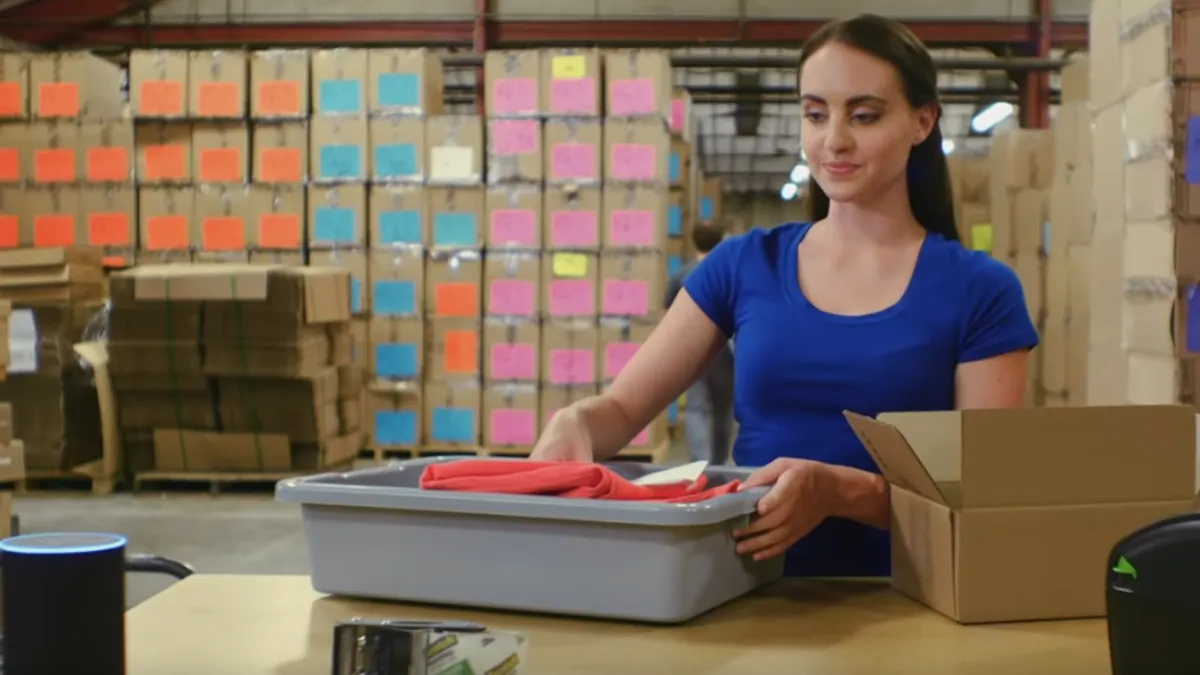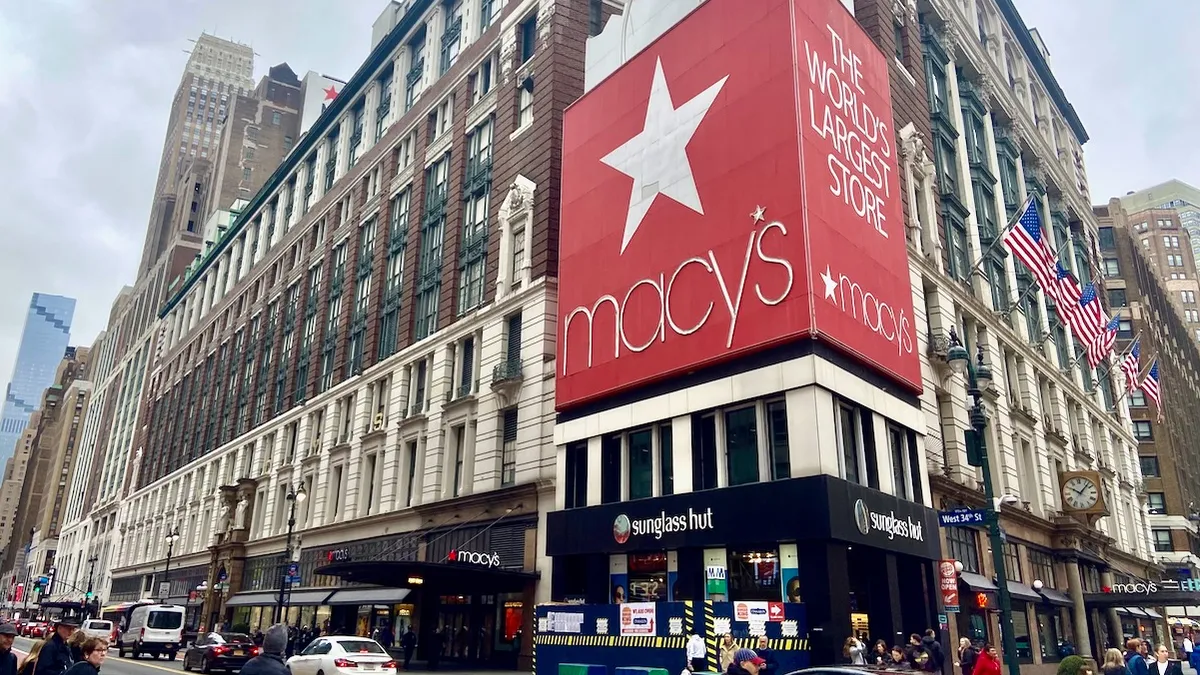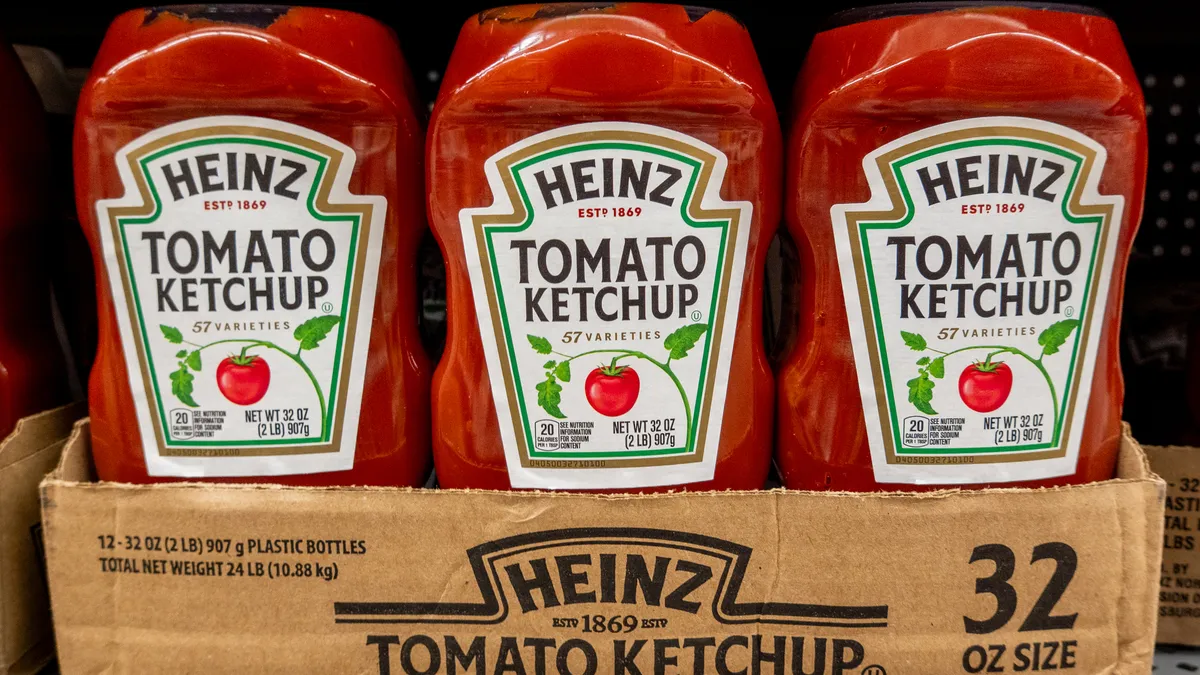Speech recognition software and voice-directed applications have been used in warehouses since the late 1990s. Even with continued technological advancements, though, adoption is still relatively low. About a quarter of warehouses use voice-directed picking, according to a 2018 Warehousing Education and Research Council (WERC) and DC Velocity survey, up from 5.7% in 2008.
As e-commerce order volume continues spiraling upwards while delivery windows shrink, warehouse workers need innovations to meet picking, packing and shipping goals. Traditional voice-directed technologies with headsets and microphones are one solution. New uses of current voice technologies, like Alexa, are another.
A shift in the 'why' behind voice technology
Voice technology, and the reasons for adopting it, is shifting. Ten years ago with the economy struggling, businesses were solely interested in voice technology because it reduced operating costs, said Deutsch.
Now "operating costs are not the number one driver," Scott Deutsch, president of the Americas division of Ehrhardt + Partner which owns Lydia Voice, told Supply Chain Dive. Instead, businesses are more interested in improving productivity, retaining workers and quickly training employees, given the high turnover in the industry.
Millennial workers are tech-savvy and like incorporating technology in their jobs, he said. They’re used to smart speakers with consumer applications like Google Home and Amazon’s Echo and Alexa, and the voice systems have similarities.
"It increases productivity by 30-45%, which is quantitatively easy to measure."

Scott Deutsch
President of the Americas division, Ehrhardt + Partner
Efficiency is important because individual customers and businesses expect their products to arrive more quickly than in the past. And there’s an increased number of small orders. Instead of a business receiving cases of product on a full or mixed pallet once a week, they’re getting multiple orders per week with individual products. "It’s a dramatic change in warehouse operations," Deutsch said.
Those moving to voice-directed technology are often changing from hand-held radio frequency scanning devices. In doing so, they decrease the picking steps in the workflow from nine steps to around five per pick, Deutsch said.
With spoken commands, there’s no need to hold a device, which must be put down during the picks. Workers no longer need to look at the device screen and use the keyboard to input or find information. The picks are more accurate because the voice system confirms the picker is at the right location and picked the right items. "It increases productivity by 30-45%, which is quantitatively easy to measure," he said.
5 factors improving voice systems and adoption
-
Speech recognition and optimized sound
-
Microphones and headsets
-
Hardware- and software-agnostic systems
-
Fast implementation
-
Low cost
The biggest technology evolution boosting the voice systems is the large data model computing, which has improved speech recognition, Deutsch said. Workers no longer need to complete a 40-minute voice training session to teach the system the user’s voice, dialect and jargon.
Voice systems like Lydia Voice are now more than 99% accurate in understanding worker commands, he said. The technology has also improved by ignoring extraneous warehouse noise, to optimize the sound. The improved data models also help optimize the warehouse space to produce an efficient workflow, tying into inventory supplies and location.
About six years ago, cabled headsets were standard in the warehouse, Deutsch said, but now about 40% of the marketplace’s new customers buy wireless Bluetooth headsets. Vests with embedded speakers and microphones are another change, so workers don’t have to wear a headset. Deutsch estimated that when given the choice, workers are almost evenly divided in their preferences for a cable-connected headset, a wireless headset and a vest system.
Voice services are gaining steam as they become warehouse management system (WMS)-agnostic and device-agnostic, compared to the past, when the technology and devices were tied together. Deutsch said the move from Windows-based devices to Android-based devices also improved the adoption. As organizations upgrade to more secure devices, the hardware and software providers are independent.
The voice systems can be integrated into another provider's WMS. While 70% of Symphony RetailAI’s grocery customers use the company’s voice-directed warehouse picking system, some use it as a stand-alone service said Patty McDonald, the company’s global solution marketing director.
McDonald and Deutsch said the voice systems are easy to implement, taking a few weeks at most to get the system set up. For workers, actual training is a handful of minutes, and managers may shadow the employee for an hour while learning it. By the end of the hour, the worker is usually comfortable using it.
Voice technology is one of the lower cost supply chain technology solution areas, said McDonald.
As for cost, there are three options, said Deutsch:
- Buying the hardware and software license and managing the data internally.
- Buying the hardware and software license and paying a fee for data management.
- Paying a monthly fee for the hardware, software and data management.
Some companies prefer buying the hardware and software license, as ROI typically comes in less than nine months, Deutsch said, and then rely on Lydia Voice to manage the cloud environment.
'Alexa, print shipping labels'
One voice technology change unique to the warehouse shipping space is ShippingEasy’s Alexa solution. It’s turning what used to just be a smart home device into a smart work device.
ShippingEasy added voice commands ("skills") to use on the Alexa device, reducing the number of steps required in the packing and shipping process. At the shipping station, workers can use Alexa commands to print packing lists, manage orders, select carriers, buy postage, print labels by order or batch, get requested updates on outstanding or shipped orders and receive updates on postage account balances.
The worker does not need the keyboard and mouse, keeping their hands free for other work. "It supports the entire pick, pack and ship process, everything you need to be able to do that competently," Kevin Nuest, vice president of product at ShippingEasy, told Supply Chain Dive.
The service works with Alexa-enabled devices like the Echo and Dot, or through a mobile device Alexa app. Workers can also use an Alexa-enabled headphone.
Once the app is downloaded on a device, it can be quickly linked to the company account, which supports multiple users. The Alexa service is free for ShippingEasy users, and Nuest said there’s a low barrier to entry, as the Amazon devices are inexpensive, and the phone app is free. The company has moved beyond beta testing, but only early adopters are using it.
Since developing the program, ShippingEasy has seen use cases it hadn’t initially anticipated. A warehouse manager might want quick analytics for the day, week or month and can ask Alexa how many orders were received that day, or how many were shipped that week. The manager can quickly do a barometer check of a sale’s success without logging into the computer or can command Alexa to print the day’s packing slips at the warehouse, before the manager leaves the house in the morning.
"It supports the entire pick, pack and ship process."

Kevin Nuest
Vice President of Product, ShippingEasy
Nuest said ShippingEasy offers customers a cheat sheet with commands, but the commands are intuitive, so many don’t need it. The system has checks in place with prompts for confirmation, so someone doesn’t accidentally order postage.
Using the Alexa system in this way is not yet on Symphony RetailAI’s radar, said McDonald, "but I can imagine eventually it’s going to have to go there."
Deutsch said a system like this wouldn’t work well on a traditional warehouse floor, which is too noisy, with conveyors, beeping forklifts, dropping pallets and intercom systems; however, in a smaller and more manual warehouse, he can see it working. He said the voice systems developed for the warehouse have been engineered to block the ambient noise.
This story was first published in our weekly newsletter, Supply Chain Dive: Operations. Sign up here.





















